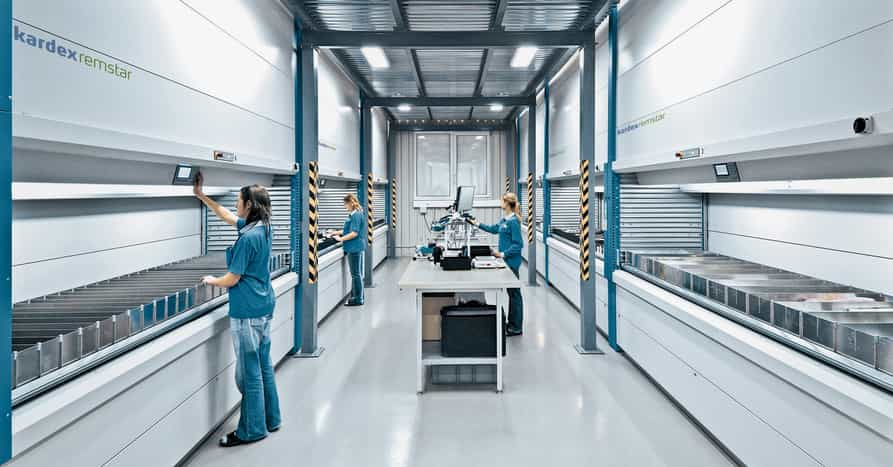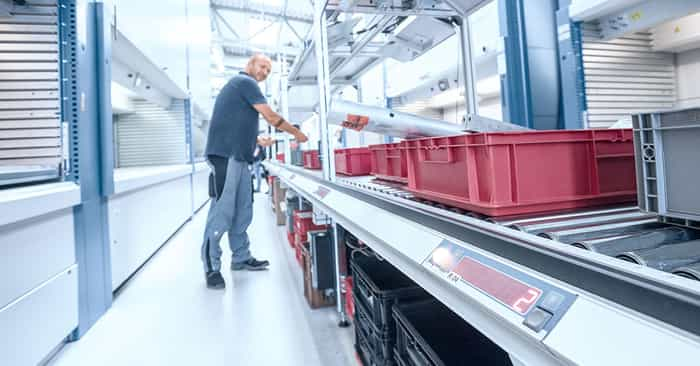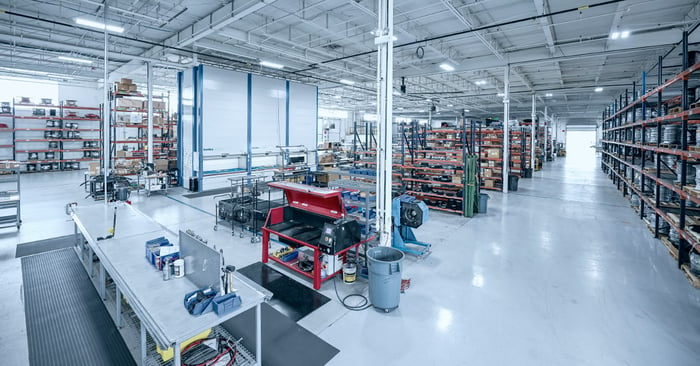Certain parts of COVID – wearing masks, keeping a 6-foot distance from others, remote learning – are (fingers crossed) temporary, while others are here to stay. The impact of COVID on the warehouse is going to have a long and lasting effects. The global supply chain and the labor pool are struggling to keep pace as COVID variations and surges continue to popup in various parts of the world.
For warehouses to survive in this uncertain climate, flexibility is key. Combining an unpredictable supply chain with fluctuating consumer behavior has some industries experiencing unprecedented demand, while demand in other industries is plummeting.
As we wait for the supply chain to stabilize, warehouses are making adjustments to meet customer demand as best they can. Now, it’s time to start thinking long term. As we try to navigate our lives in today’s new “normal”, we're taking a look at: 15 ways COVID will impact warehousing and distribution forever.
1. Continued Social Distancing
Even after COVID is no longer a threat and the mask mandates go away, social distancing will continue. It might not be 6-feet, but warehouses will continue to keep workers spread further apart than they were pre-COVID. This includes keeping and maintaining the one-way traffic aisles, sanitization stations, designated work areas. Keeping these precautions in place prevents the spread of a future pandemic, as well as the common cold or flu viruses. To ensure the overall health and safety of the workforce, some form of social distancing is here to stay.
For a deeper dive: 10 Social Distancing Strategies for Your Warehouse
2. Keeping More Inventory on Hand
Prior to the pandemic, most manufacturers had adopted lean manufacturing as a best practice. Receiving goods just-in-time (JIT) for manufacturing kept inventory costs down and utilized space more efficiently. When COVID hit, this lean strategy left many manufacturers with inventory shortages and in some cases caused production to stop completely.
While lean manufacturing will remain a best practice, the balance between JIT inventory and safety stock will change. To prevent future inventory shortages leading to production shutdowns, manufacturers will keep more inventory (buffer stock) on hand.. Exactly how much more will depend on varying factors, but overall inventory on-hand will increase.
This will only escalate warehouse space and capacity issues. Many warehouses struggled to make space for social distancing, and now they will need space to manage this additional inventory.
3. Increased Use of Warehouse Automation
Warehouse automation has been gaining steady traction for years, but like many things, COVID will speed its adoption. As warehouses cope with adjusting inventory counts, making space for work in process (WIP), speeding order delivery, implementing social distancing and decentralization they will turn to automated storage and retrieval systems to help reclaim floor space and improve the efficiencies of their workforce.
Automated storage and retrieval systems (ASRS) can recover up to 85% of existing floor space when compared to standard shelving. Warehouses need this additional capacity to meet post-COVID challenges. Combined with pick to light systems and integrated inventory management software, ASRS can help warehouses solve labor challenges and manage unpredictable spikes in demand.
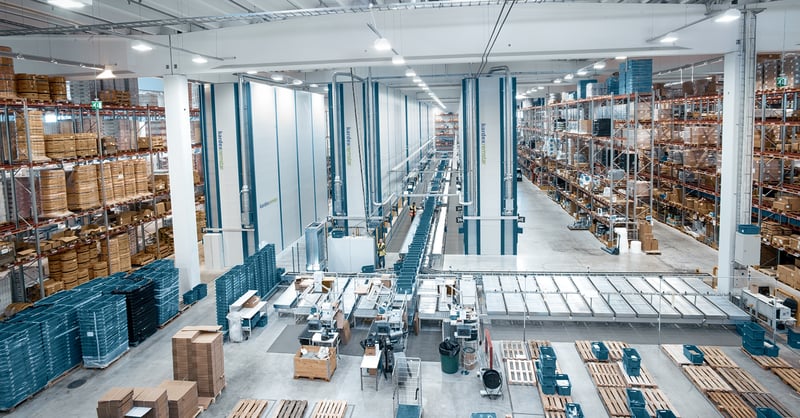
4. Reshoring/Nearshoring Manufacturing
COVID disrupted the global supply chain in ways no one could predict. As the global supply chain is beginning to stabilize, manufacturers are reevaluating their processes. Many are considering reshoring/nearshoring – bringing manufacturing tasks in house, or at least closer to home.
Reshoring manufacturing operations will increase control on the supply chain to prevent future crisis’s while also saving significantly on air and ocean freight transportation costs. Refusing to be caught in a global supply chain nightmare again, reshoring initiatives are taking hold and will require additional warehouse capacity.
For a deeper dive: How ASRS is Making Reshoring Manufacturing More Affordable Post-COVID
5. Scalable Processes & Picking Strategies
While some warehouses were overwhelmed with orders and facing labor and inventory shortages, warehouses just down the road saw orders dry up and were left with an abundance of inventory. Wild fluctuations in order demand are very difficult for most warehouses to handle.
In the wake of COVID, warehouses will look to implement scalable processes to manage unpredictable demand. Using a combination of material handling technologies and software solutions, warehouses will deploy flexible order picking strategies allowing them to easily handle peaks (and valleys) in order demand. Warehouses will demand picking systems and processes that are able to increase or decrease picking speeds overnight - by adjusting labor requirements or adjusting the automation itself.
6. More Work-in-Process (WIP) Inventory
With unpredictable supply chains, manufacturers will need to make space for additional WIP. Since COVID, supply chain hiccups are common, and manufacturers need to be prepared to handle them. When parts are delayed manufactures are left with half finished product (WIP) waiting to be completed.
WIP inventory adds up. Manufactures will need a solution to handle stockpiles of WIP so they aren’t damaged or lost while they wait to be completed. Increased WIP inventory will be another catalyst for integrating high density automation into the warehouse.
7. Increased Warehouse Capacity
Warehouses are going to need more capacity post-COVID for a variety of reasons. Increased inventory on-hand, meeting increased demand, additional space for social distancing – all lead to more storage locations and more capacity.
This additional capacity might be spread out in smaller more local or decentralized warehouses, but the overall capacity of total warehouse space will increase. Warehouse managers will also turn to ASRS technologies to increase capacity within one facility to keep more inventory on hand or scale up for e-commerce order fulfillment.
For a deeper dive: Floor Space Utilization & Storage Capacity: Automate to Grow Operations
8. Smaller Decentralized Warehouse Locations
To provide same-day or next-day delivery customers are expecting, manufacturers will seek to decentralize their warehouse locations. Being closer to the customer decreases transportation costs and reduces the risk of supply chain disruption if there is a delay/interruption in one part of the country, but not the other.
While some manufacturers will look to establish these decentralized warehouse facilities in key locations, others might seek to utilize established 3PLs (Third Party Logistics). Further, while new satellite distribution centers are established, warehouses will seek to use high density automation to keep the warehouse footprint as small and limit the initial investment and ongoing required labor costs.
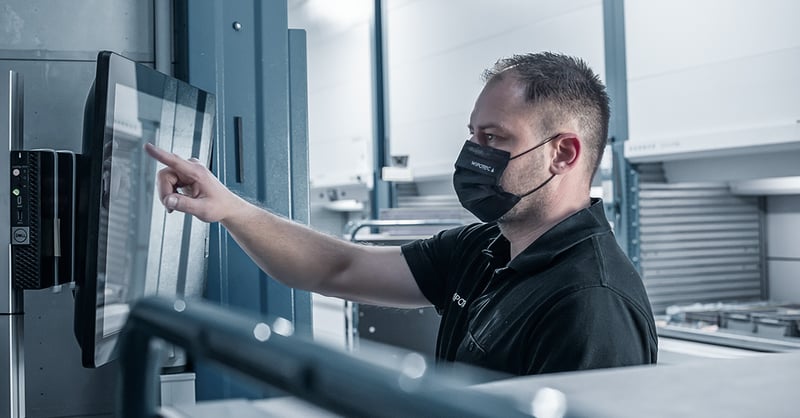
9. Greater Reliance on 3PL Distribution Networks
Manufacturers will be looking to decentralize warehouse locations and be closer to the end customer to meet delivery times. While some companies will focus on building the infrastructure internally, others will look to leverage existing distribution networks using 3PLs. 3PL partnerships will play a bigger role in future warehouse and distribution center fulfillment.
10. Shorter Warehouse/3PL Contracts
If COVID taught us anything, it’s that the future is unpredictable. With a possible second on the horizon, companies will demand shorter contract terms when renting, leasing or co-sharing warehouse space. This will be the same for 3PL partnerships. Contract terms will be shortened which might also lead to longer contract terms being incentivized. Post-COVID, companies will be hesitant to sign a 3-5 year contract commitment. Standard warehouse space and 3PL partnership contract terms will be lowered to 1-2 years.
11. Accelerated Growth of E-commerce
While the COVID pandemic didn’t start the e-commerce boom, it is certainly responsible for the recent surge in demand. COVID catapulted e-commerce ahead 2 years in only 10 months; realizing projected 2022 results in 2020 for a total of $4.28 trillion in global e-commerce sales in 2020. Warehouse and distribution centers aren’t new to e-commerce, but the rapid increase in demand has most struggling to keep up.
While some consumers are eager to return to in-store shopping, the data suggests the e-commerce boom won’t subside when COVID relents. A recent survey by Bizrate Insights found “60% of shoppers reported buying product online instead of in-store due to COVID-19, and 32% expect to continue to shop online”.
The sustained impact of increased e-commerce orders has changed the order profile of the warehouse significantly. To fill these orders, warehouses will pivot from case picking to pallets destined for retail locations – to picking individual pieces into boxes to be shipped direct to end customers. This is a major change for warehouse operations – material flow, processes and storage technologies will all be impacted as the warehouse makes the shift from full case to split case picking.
For a deeper dive: Split-Case Picking: Diversifying Your Warehouse to Meet Post-COVID Consumer Demands
.png?width=800&height=419&name=KardexRemstar_LR35_Detail_PickStation_043_CO51_DL-1200x628-0d63cf9_Featured%20Image%20(1).png)
12. Embracing Omni-Channel Distribution
Since the e-commerce boom is here to say, so is omni-channel distribution. As the warehouse shifts from picking full cases for retail locations to picking individual items for end customers, they also need to manage multiple delivery options. Omni-Channel includes letting the customer purchase from anywhere (in-store, online) and delivering the product where they’d like (ship to home, pickup in store, curbside pickup). This also includes the return of the product (ship to return or return in-store).
Customers have always been demanding, but with the COVID accelerating e-commerce demand, omni-channel distribution isn’t a trend that will go away anytime soon. This leaves warehouse and distribution centers looking for advanced processes, technologies and software to support omni-channel distribution.
13. Micro-Distribution from Store
As customers demand faster shipments, retail businesses will look to leverage existing brick and mortar locations as mini-distribution centers. They will aim to build a larger distribution network without a large investment. Equipping existing retail store locations with distribution capabilities can be more cost effective than partnering with a 3PL or establishing additional warehouses.
With the right inventory management software and a compact storage device, it’s possible (and cost effective) to transform a back storeroom into a micro-distribution center. Retailers will look to leverage existing stores to manage growth.
14. New Importance on Inventory Visibility
As demand for faster delivery rises and companies decentralize their warehouses (or leverage retail stores for distribution), inventory visibility throughout the supply chain will take on a new importance. The ability to know, in real time, exactly what inventory is on hand at each warehouse is the key to assigning and filling orders efficiently.
Few companies have full visibility into the inventory in their supply chain. As warehouses look to decentralize operations, the need for real time inventory visibility will increase tremendously.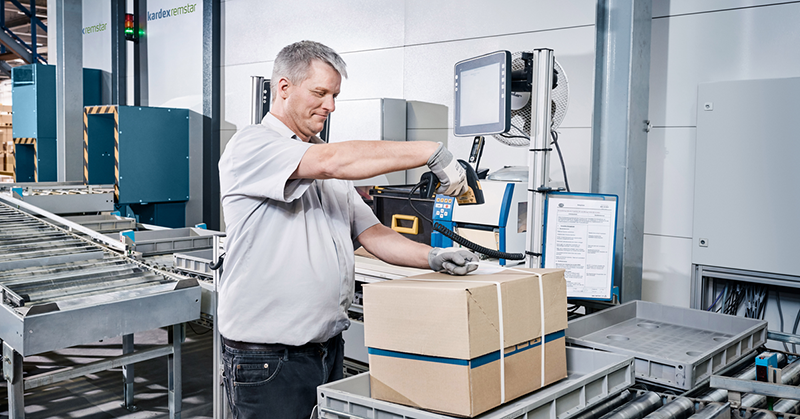
15. Increase in Cold Storage
The impact of COVID caused some sectors of e-commerce to grow at a faster rate than others. One of the fastest growing e-commerce sectors is grocery. Consumers fought online for grocery pickup times when COVID first hit. Even now, many consumers aren’t headed back into the store, preferring online pickup to an in-store visit.
Increased online grocery demand combined with the decline in dining out is set to increase the demand for cold warehousing in the future. Cold storage adds significant costs to a warehouse. Thus, warehouses will look to use automation to manage smaller, more efficient temperature-controlled storage warehouses
In Summary
As we settle into our post-COVID lives the only thing that is certain is that nothing is certain. Companies are creating back up plans for their back up plans. With an unpredictable future, warehouse and distribution centers will look to be as adaptable and flexible as possible. Their main focus will be on how to best utilize space and efficiently manage their biggest expense - labor.

